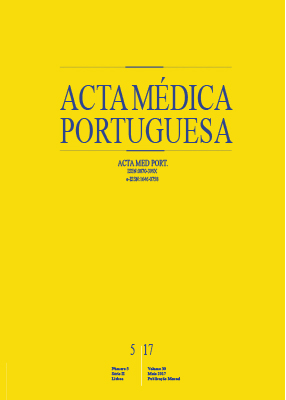Anaerobic Bacteria with Clinical Relevance: Morphologic and Taxonomic Classification, Distribution among Human Microbiota and Microbiologic Diagnosis
DOI:
https://doi.org/10.20344/amp.8098Keywords:
Bacteria, Anaerobic, Bacterial Infections, MicrobiotaAbstract
The wide burden of anaerobic bacteria colonizing human body comprises about 90% of its total biomass. The biotic relationship between humans and its microbiota sets reciprocal benefits, albeit with pathogenic potencial for the human being in particular dysbiosis situations. Infections adjacent to or originating from the skin or mucous membranes of the intestinal, genitourinary and upper respiratory tracts are often polymicrobial in nature, whereby should anaerobes be invariably included in the etiological differential diagnosis of these conditions. Gram negative bacilli such as Bacteroides fragilis group, Fusobacterium spp., Porphyromonas spp., Prevotella spp. and Gram positive cocci such as Peptostreptococcus spp. stand out for their high virulence and frequence of isolation in suppurative infections and abcesses with metastatic or contiguous relation to human microbiota. The fastidious nature of anaerobic bacteria, especially of less aerotolerant species, compels to particular techniques of sample collection, transport and cultural isolation that challenge clinicians and microbiologists for a full efficient practice. Such requirements bring on a poor identification of anaerobic bacteria in the clinical practice and undervaluation of its aetiopathogenic potential amongst common polymicrobial infections. An approach over microbial flora’s composition in the different human anatomical sites is a primary goal of the present article. Clinicians are intended to recognize the variability and proportion of likely involved anaerobic microorganisms in certain infectious processes related to human microbiota, in order to optimize samples processing and the establishment of an appropriate empirical antibiotic therapy, mindful of anaerobic coverage and according to known susceptibility profiles.
Downloads
Downloads
Published
How to Cite
Issue
Section
License
All the articles published in the AMP are open access and comply with the requirements of funding agencies or academic institutions. The AMP is governed by the terms of the Creative Commons ‘Attribution – Non-Commercial Use - (CC-BY-NC)’ license, regarding the use by third parties.
It is the author’s responsibility to obtain approval for the reproduction of figures, tables, etc. from other publications.
Upon acceptance of an article for publication, the authors will be asked to complete the ICMJE “Copyright Liability and Copyright Sharing Statement “(http://www.actamedicaportuguesa.com/info/AMP-NormasPublicacao.pdf) and the “Declaration of Potential Conflicts of Interest” (http:// www.icmje.org/conflicts-of-interest). An e-mail will be sent to the corresponding author to acknowledge receipt of the manuscript.
After publication, the authors are authorised to make their articles available in repositories of their institutions of origin, as long as they always mention where they were published and according to the Creative Commons license.









